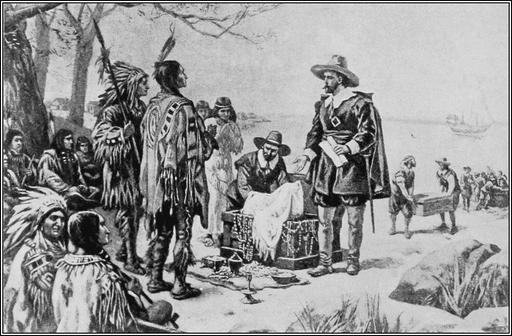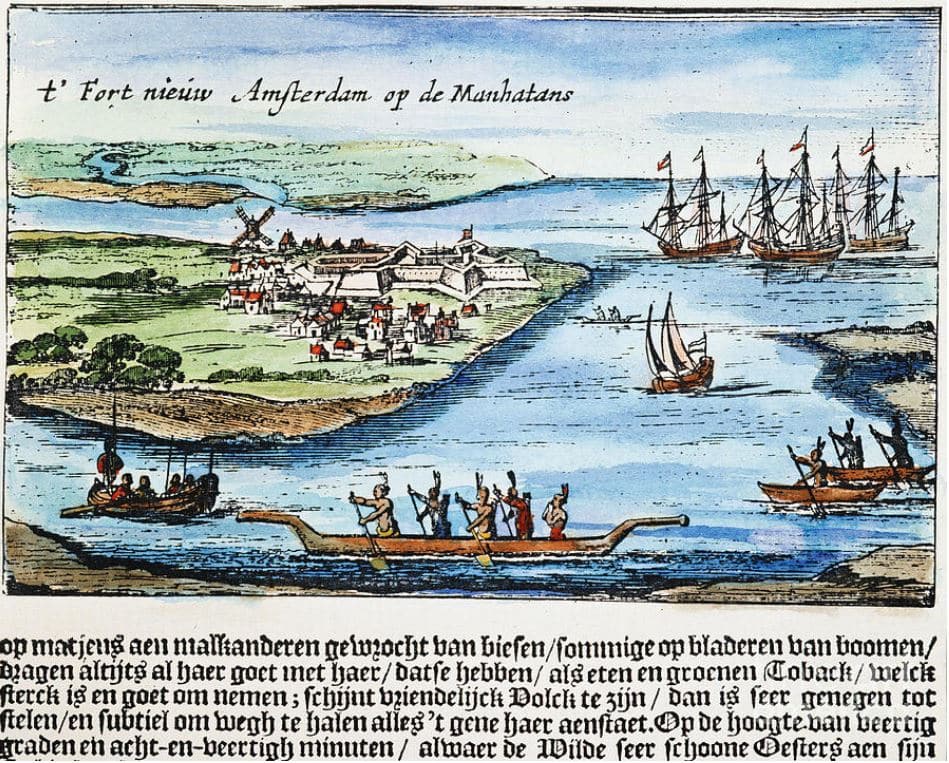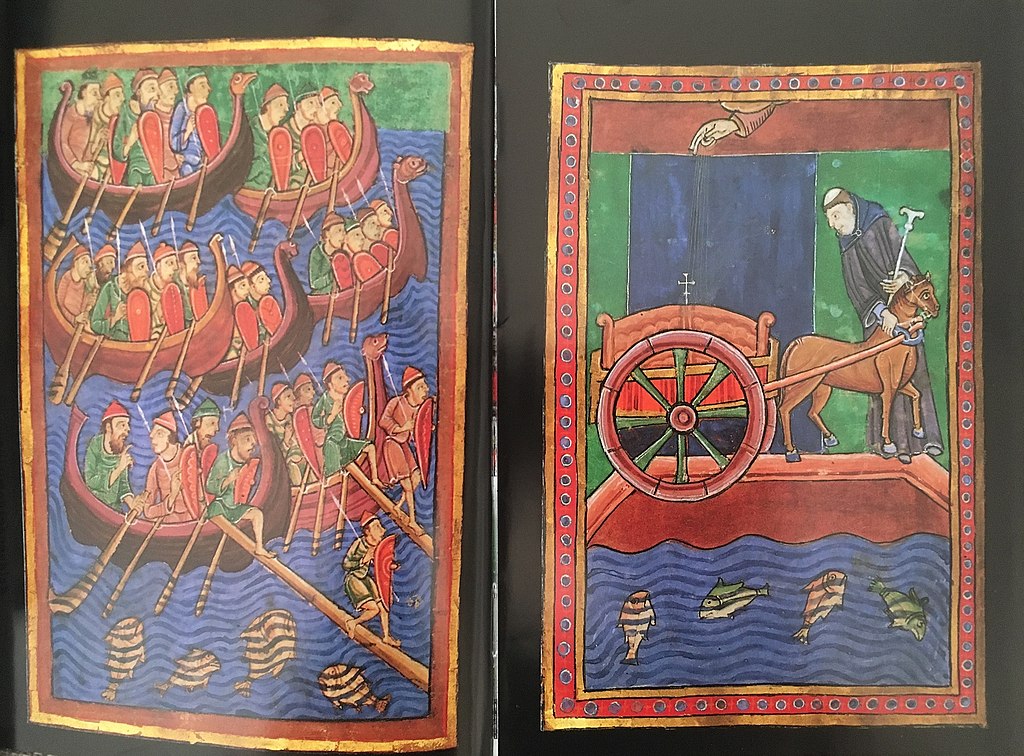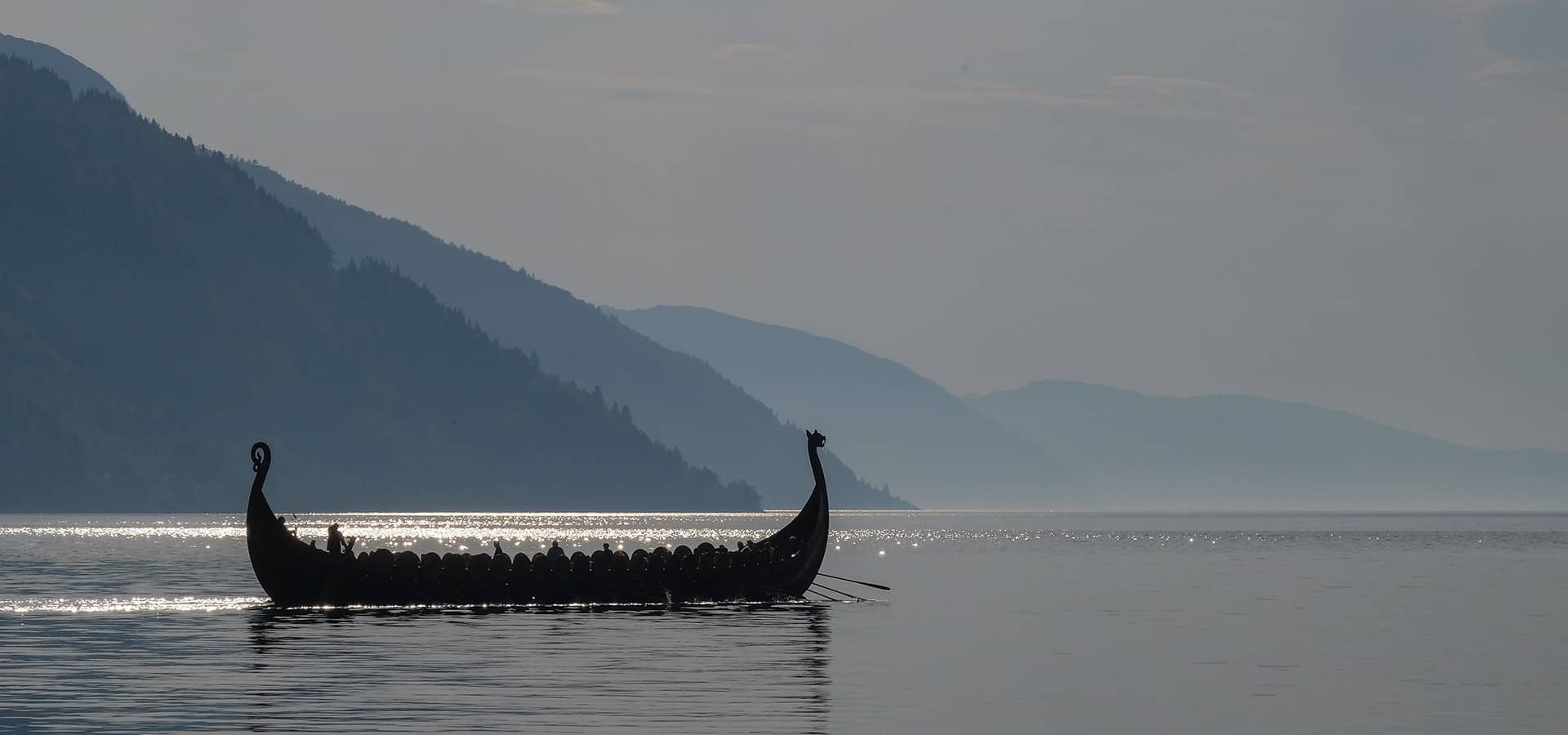However, that’s not why New York is tied to the Vikings
New York was not always known by that name. Prior to the arrival of Europeans, the Lenape tribe inhabited the area, calling it “Mana-hatta,” meaning “the place where we get wood to make bows.” The island of Manhattan is obviously derived from this very practical and informative name.

The purchase of Manhattan. Alfred Fredericks, Public domain, via Wikimedia Commons
In 1614, the Dutch established the colony of “New Netherlands,” with “New Amsterdam” as its capital. Allegedly, they purchased the land from the Lenape for 60 guilders, which is equivalent to $1,100 in today’s currency. Yet, in a period of European conflict, turmoil, and empire-building, the Dutch did not retain New Amsterdam for long.

New Amsterdam in 1651. Kryn Fredericks, Public domain, via Wikimedia Commons
In 1664, the British arrived, claiming the territory and renaming the city “New York” in honor of the Duke of York, who later became James II, King of England. The Duke of York is a noble title based on York, a city in Northeast England. The city was founded by the Romans in 71 AD, known then as Eboracum. Later on, after the Romans left and the Anglo-Saxons took over, the city’s name changed to Eoforwic, meaning “wild-boar-town.”
Ivar the Boneless founded Jorvik
Enter the Vikings and “The Great Heathen Army” led by the Warlord Ivar the Boneless. In 866 AD they invaded and captured the dwindling city of Eoforwic, transforming it into a prosperous and essential hub within the Danish kingdom of Northumbria. They renamed it Jórvik, which means “wild-boar bay.” The name Jórvik eventually turned into “York”.

Invasion of England by Ivar the Boneless in 886. Illuminations of an English history of the 11th century. Uriel1022, Public domain, via Wikimedia Commons
So, there you have it. Without the Vikings, New York would have been called something else. Maybe New Eoforwic.
Note: In 1673, the Dutch recaptured the city and renamed it “New Orange.” This name was not well-liked among the residents, who might have preferred “The Big Apple” instead. New Orange only lasted for a year. Then the British came back, and New York has been New York ever since.

